Art World
Saudi Arabia’s Contemporary Art Scene Is Suddenly Buzzing, With the Crown Prince’s Blessing—and His Backing
Artists are optimistic as the kingdom opens its doors to cinemas, Cirque du Soleil, and an ambitious slate of new art centers.
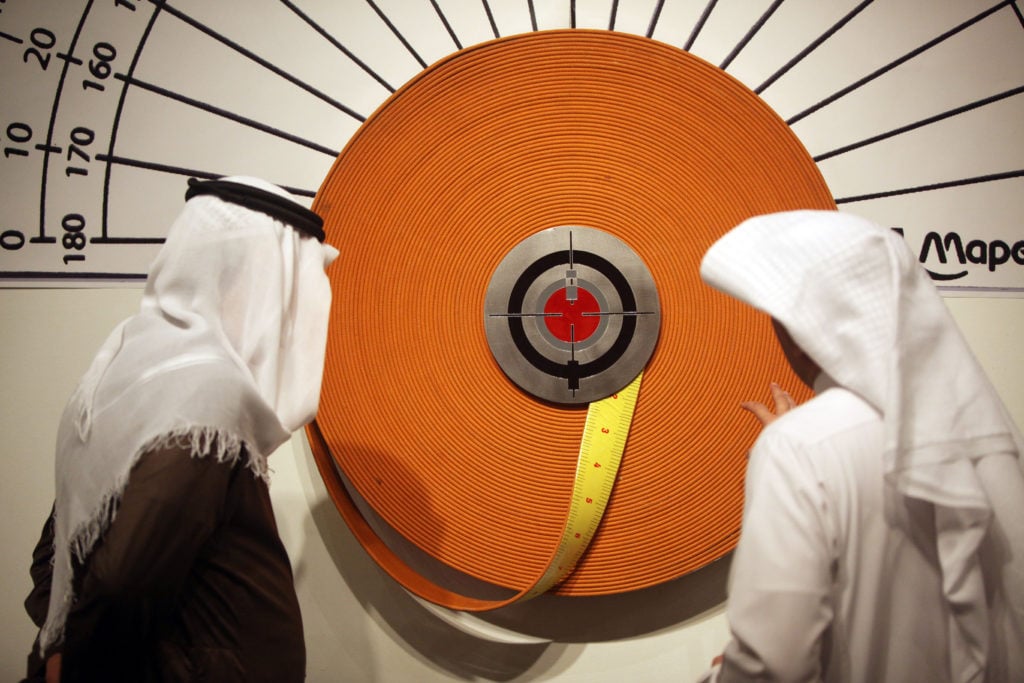
Artists are optimistic as the kingdom opens its doors to cinemas, Cirque du Soleil, and an ambitious slate of new art centers.

Arsalan Mohammad

Saudi Arabia is changing—rapidly. Under the sweeping reforms of Crown Prince Mohammed Bin Salman, the country’s 32-year-old de facto leader, the kingdom’s first cinemas are due to open within months. An opera house is already under way. Cirque du Soleil is coming, too, while a vast “entertainment city,” roughly the size of Las Vegas, is being built near Riyadh. Mixed-sex music festivals have brought the unfamiliar sound of blaring EDM to the streets of Jeddah, while graffiti and public art installations have popped up in conservative corners of Mecca.
Indeed, visual art is playing a central role in this sweeping cultural shift. The Crown Prince—who, according to some reports, was behind the record purchase of Leonardo da Vinci’s Salvator Mundi—recently announced the creation of the Misk Art Institute, an artist-led organization operating under the auspices of the state-funded Misk Foundation.
Meanwhile, Saudi Aramco oil company is building the Snøhetta-designed King Abdulaziz Center for World Culture in Dammam, which could have a soft opening as early as this spring. And next year, Art Jameel, a nonprofit set up by the wealthy car-dealing Jameel family in 2003, is due to open the Hayy (or neighborhood), a “creative hub” in Jeddah.
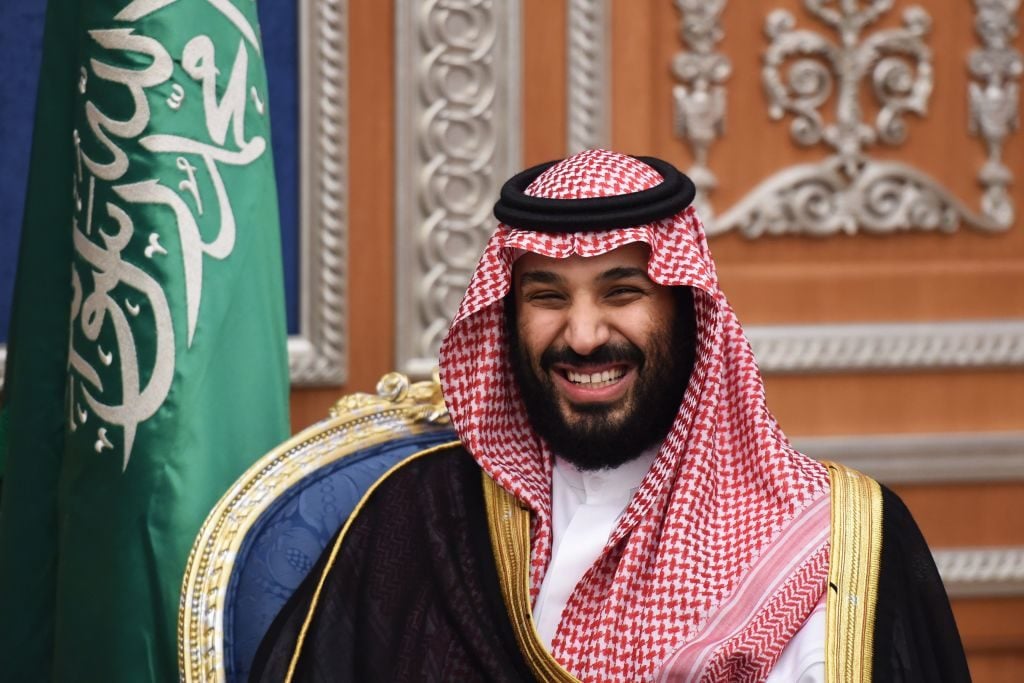
Saudi Crown Prince Mohammed bin Salman on November 14, 2017, in Riyadh. Photo by Fayez Nureldine /AFP/Getty Images.
This explosion of art activity comes as government officials announced a projected $64 billion investment, in partnership with the private sector, into cultural infrastructure over the coming decade. Taking inspiration from the successes (and failures) of its smaller Gulf neighbors such as Dubai, Saudi Arabia is striving to shift away from reliance on oil and gas revenues. Ending years of global isolation, the country’s ruler is repositioning it as a dynamic place for business and leisure.
And for once, the ruling elite and the upstart creative class seem to be on the same page. The country’s young, globally connected population (more than 70 percent of whom are under 35) is more than ready for a new way of doing things.
“Saudi is the fastest-evolving society I have been to,” the formerly Jeddah-based artist Aya Haidar told artnet News. “The levels of creativity, from underground poetry slams to rooftop book fairs…. Everyday change is owned by the people.” The changes, she says, are part of a “bottom-up process that is forcing the formal structures ‘up top’ to listen and adapt toward a modern-day Saudi.”
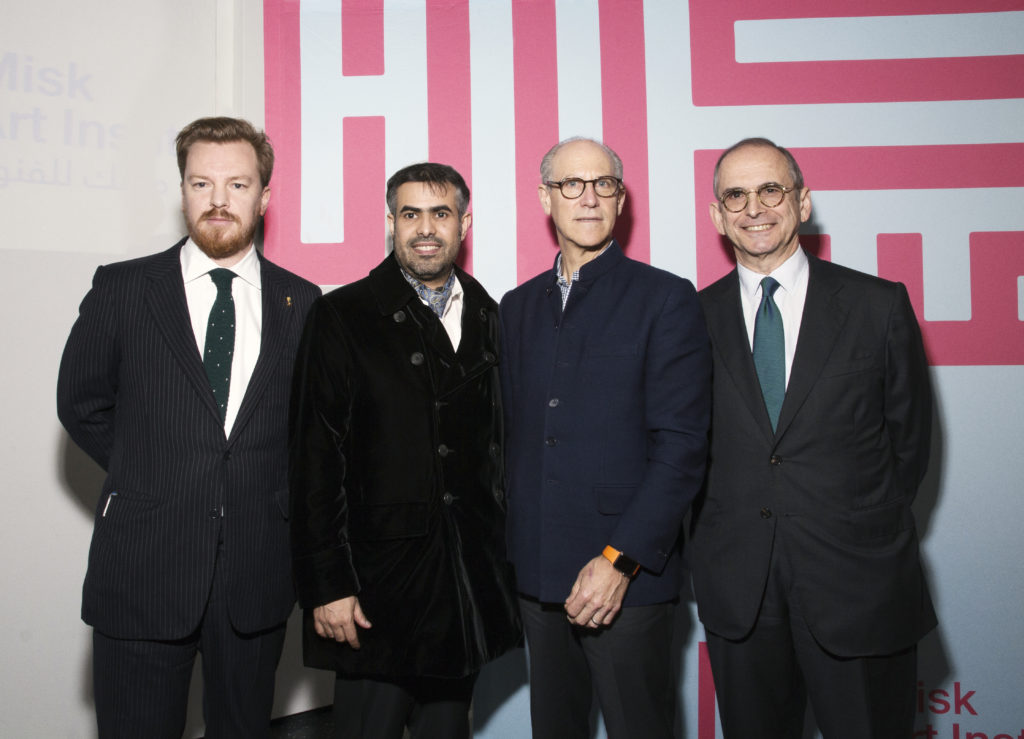
The launch of the Misk Art Institute at MoMA in New York in January. From left, Stephen Stapleton, Ahmed Mater, Glenn Lowry, and Jay Levenson. Courtesy of Misk.
The new Misk Art Institute is planning an art center in Riyadh, an Arab art festival in New York in October, and an educational exchange program that will send Saudi artists to California. Crown Prince Mohammed Bin Salman first tapped Ahmed Mater, one of Saudi’s best-known artists, to head up the institute about a year and a half ago.
“We have the opportunity to dream about what an institute could mean, both locally and globally,” Mater said. “When we talk about the Misk Art Institute, we are proposing a collaborative platform led by artists. [It will be] a unique opportunity to combine the energy and authenticity of creative voices from the bottom up, with the vision and resources from the top.”
Meanwhile, Art Jameel’s planned Hayy center in Jeddah represents the culmination of the private foundation’s long-term engagement with the arts. In the past, it has focused its energies on promoting art abroad through partnerships with the Victoria and Albert Museum in London (where it funds an award for art inspired by the Islamic tradition) and New York’s Metropolitan Museum of Art (where it funds acquisitions of work by Modern and contemporary artists from the Middle East).
Now, it is focused on building permanent institutions closer to home. After Art Jameel opens an arts center in Dubai in November, it will unveil its most ambitious project to date next spring: the Hayy Creative Hub in Jeddah. It is looking to team up with approximately 12 partner organizations to create a 17,000-square-meter complex that includes art and design galleries, comedy clubs, cafes, and a digital film studio.
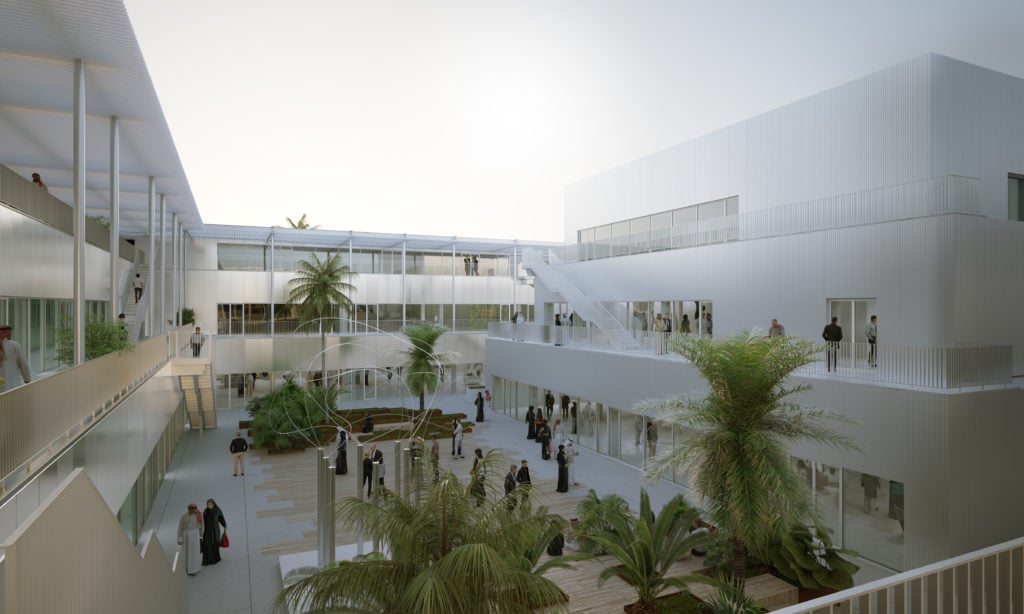
Hayy: Creative Hub, commissioned by Art Jameel and designed by ibda design.
Art Jameel’s director Antonia Carver described the Hayy as a “place where people can hang out and all this activity can be brought into a public setting.” The hub aims to establish an unprecedented degree of cohesion in the Saudi scene—and will also have the added benefit of providing a destination for the much-anticipated cultural tourists the city hopes to attract in the coming years.
News of the impending openings of the Hayy, Misk, and King Abdulaziz Center has caused an explosion of excitement on social media and among the country’s artists. “What is important to remember is that the government is [now] acknowledging this as a vital need, which is more than can be said for many ‘developed’ countries around the world which are actively cutting funding towards the arts and education,” said the artist Aya Haider.
The new energy in the Saudi art scene was exemplified by the fifth edition of the 21,39 festival, an event organized by the Saudi Arts Council in Jeddah earlier this month. What began as a modest project that could not secure any sort of government funding has become a key date in the region’s newly robust cultural calendar.
This year’s festival included a major group show by predominantly young Saudi and international artists held inside a Jeddah shopping mall, as well as an eclectic sampling of young and mid-career artists at the country’s leading art gallery Athr, shows at the Hafez Gallery, and numerous other presentations, gatherings, and talks. The mood was buoyant—jubilant, even.
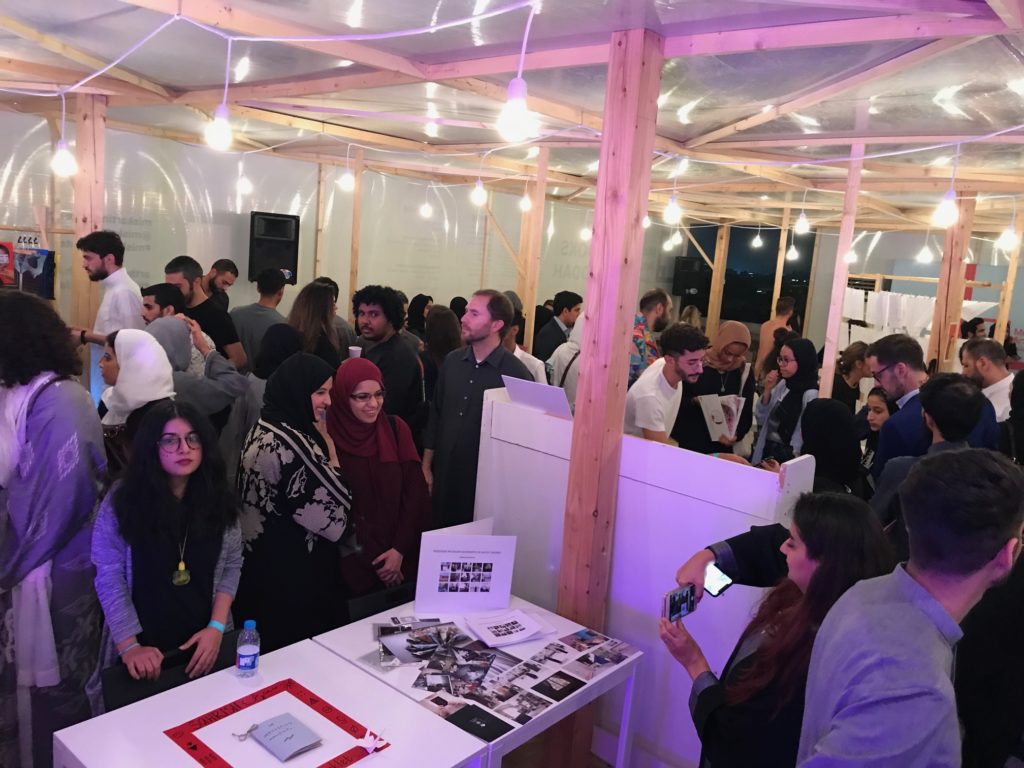
A rooftop party and art-book fair at Athr Gallery. Photo courtesy Antonia Carver.
“21,39 always has a particular kind of buzz, but this year, it felt really positive,” Carver told artnet News. She said the events—including the country’s first art-book fair, held in a bespoke tent on the roof of Athr gallery—were more crowded than she has ever seen them.
Stephen Stapleton, the British artist who founded the nonprofit Edge of Arabia in 2003 and is the Misk Art Institute’s international director, helped organize Art Books Jeddah, which he said “went down really well with both local and international visitors.”
The main group show of 21,39, which runs until May across multiple sites in Jeddah, is called “Refusing To Be Still.” Organized by London-based Vassilis Oikonomopoulos, the assistant curator for International Art Collections at Tate Modern, it features new work by 30 Saudi and international artists.
The work on show illustrates the broad interests of artists in the region, addressing themes as as diverse as the pressures of rapid urbanization, the loss of traditional ways of life, countering Western stereotypes, and the female body as a political and cultural battleground. Participating artists—whether emerging or established—must all negotiate religious sensitivities in the conservative country.
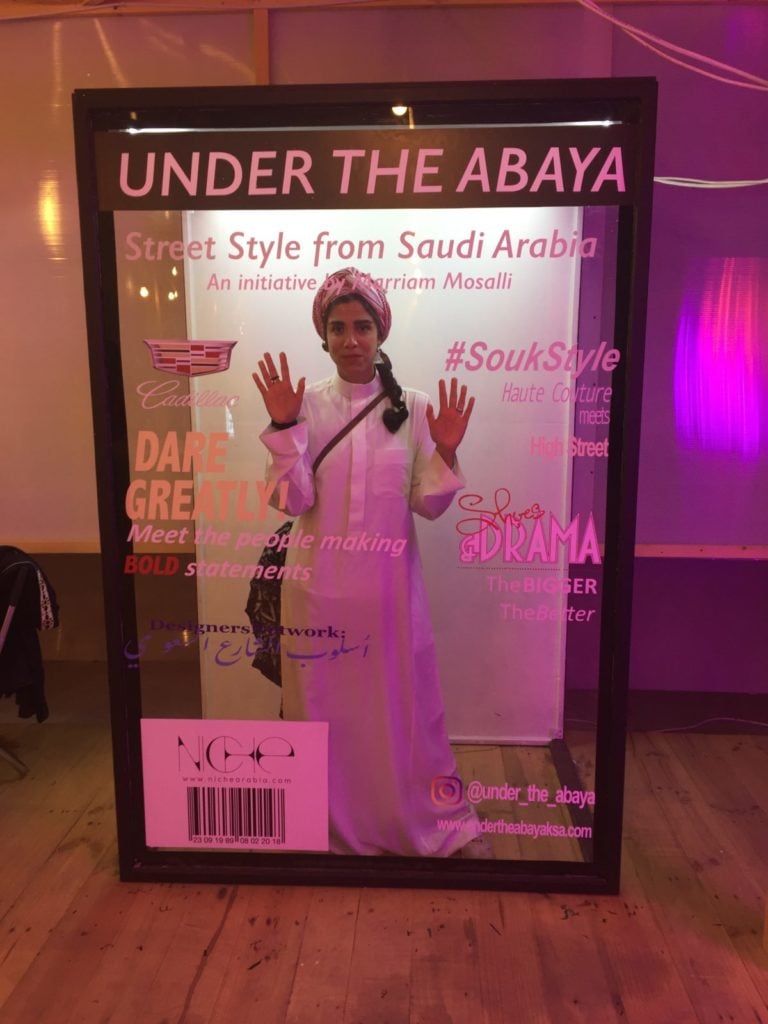
Artist Aya Haidar at the launch of 21,39 earlier this month. Image courtesy of the artist.
Yet, in line with the general easing on cultural expression in the Kingdom, these previously impermeable barriers of decorum appear to be shifting. “There seems to be an active dislodging of subject matter, previously taboo, and pushing of boundaries not only in what is said but how it is expressed,” artist Aya Haidar said.
Despite the restricted exposure of the arts in recent decades, however, Carver stressed that the Kingdom has a longer and more illustrious cultural heritage than many realize. “These days, it’s easy to exaggerate the changes taking place,” she said. “There’s always been a deeply rooted cultural community in Saudi in terms of the arts, which can be overlooked in times of change.”
Nevertheless, today feels different. For the first time in memory, she said, “there is a real synergy now between what’s happening in the government side and what’s happening at the grassroots.”